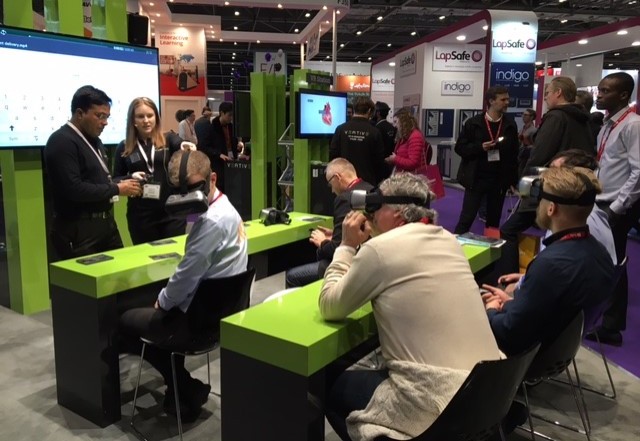Does Virtual Reality Have A Place In The Classroom?

IN DEPTH: The short answer is ‘yes.’ The long answer? Well, that’s a bit more complicated…
One of the main topics of conversation at education technology expo Bett 2017 was around virtual reality (VR) and whether the technology actually has a place in our school and college classrooms.
At the show, there were a handful of companies showing off ‘classroom VR’ experiences, with several others featuring headsets on their stands to in an attempt to persuade educators of the merits of VR.
From speaking to various people, the general consensus seems to be, yes, virtual reality certainly does have a role to play in the classroom, but only if it’s used in the right way.![]()
Current state of play
It’s not a risky prediction to say VR will be one of the next revolutionary technologies, with wide-ranging applications covering multiple industries.
Last year appeared to be the turning point, as the world’s biggest technology companies accelerated their VR efforts. For example, it dominated Mobile World Congress 2016, Apple CEO Tim Cook publicly gave it the thumbs up and Google’s £15 cardboard went on sale in the UK.
At the more premium end of the spectrum we have the £689 HTC Vive, which reportedly sold out in just ten minutes ahead of its UK launch and the even pricier Microsoft HoloLens which also became available to purchase in the UK.
The sector is growing at a phenomenal pace, with analyst firm IDC predicting that worldwide revenues for augmented reality (AR) and VR will reach $162 billion (£130bn) in 2020.
Sectors such as gaming, entertainment and design have perhaps the most obvious use cases, but VR could also have a significant role to play in the education sector. The big question is how exactly will it fit in?
VR in schools
The number of VR companies in attendance at Bett 2017 suggests that more and more educators are coming around to the idea of incorporating the technology into their schools, but the problem a lot of people appear to be struggling with is how best to use it.
“Virtual reality has been around a long time, but the ability to take it into your classrooms has not,” said Sanjesh Sharma, a trainer at ClassVR. “For schools the important part is how do we make this technology work in the classroom to deliver experiences that we’ve not been able to deliver before?”
The main issue Sharma identified is that, whereas other technologies currently being used in classrooms – such as smartphones and tablets – are widely used by students, virtual reality is much further behind on the adoption curve so will be unfamiliar to the majority of schoolchildren and teachers.
But, this doesn’t mean it should be ignored: “Virtual reality is exactly the same as everything that has come before it. How do we use technology to create beautiful stories, to create phenomenal experiences, to create all manner of exciting things for students?
“Virtual reality is not a tablet replacement, it’s not a laptop replacement. Virtual reality is something that comes into your classroom that you use to stimulate kids in different ways.”
Read more on page 2….
Are you an A+ virtual reality student? Take our quiz and find out!